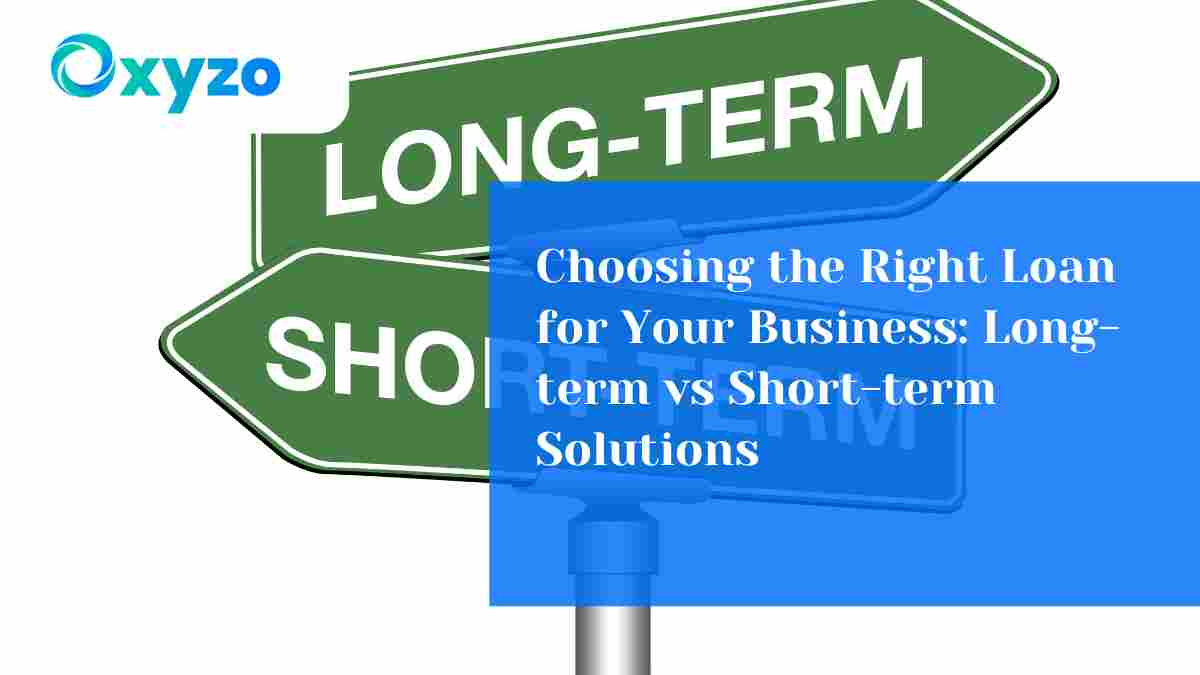Comparing Term Loans and Other Small Business Loan Options

Comparing Term Loans and Other Small Business Loan Options
Choosing the right financing option can significantly impact your business's success and financial health. While term loans offer predictable payments and substantial funding amounts, they're just one of several financing tools available to small businesses. Understanding the differences between various loan options helps you select the financing that best aligns with your specific needs, timeline, and business objectives.
Term Loans: The Foundation Option
- Structured and Predictable: Term loans provide lump-sum funding with fixed monthly payments over predetermined periods, typically 1-10 years. This structure offers payment predictability that simplifies budgeting and financial planning. Interest rates can be fixed or variable, with fixed rates providing additional payment stability.
- Best for Major Investments: Term loans excel for one-time investments like equipment purchases, facility expansion, debt consolidation, or major inventory purchases. The substantial funding amounts—often $25,000 to $500,000 or more—support significant business investments that generate long-term value.
- Qualification Requirements: Traditional term loans typically require strong credit scores, established business history (2+ years), and comprehensive financial documentation. This thorough evaluation process can take weeks but often results in favorable interest rates for qualified borrowers.
Lines of Credit: Maximum Flexibility
- Revolving Credit Structure: Business lines of credit function like business credit cards with higher limits and better terms. You access funds as needed up to your credit limit, pay interest only on outstanding balances, and regain access to credit as you repay. This flexibility makes lines of credit ideal for managing cash flow fluctuations.
- Variable Funding Needs: Lines of credit work best for businesses with unpredictable or seasonal funding needs. Whether bridging invoice payment gaps, handling unexpected expenses, or capitalizing on time-sensitive opportunities, lines of credit provide immediate access to working capital without reapplying.
- Cost Efficiency: You pay interest only when you use the credit line, making it cost-effective for standby financing. Unused credit doesn't generate interest charges, unlike term loans where you pay interest on the full amount from day one.
SBA Loans: Government-Backed Benefits
- Favorable Terms and Rates: Small Business Administration loans offer longer repayment terms (up to 25 years for real estate) and competitive interest rates due to government backing. This backing encourages lender participation and reduces risk, resulting in better terms for borrowers.
- Lower Down Payment Requirements: SBA loans typically require lower down payments than conventional financing—often 10-15% compared to 20-30% for traditional loans. This accessibility helps businesses with limited cash reserves access substantial funding for growth investments.
- Extended Processing Times: The comprehensive SBA approval process can take 30-90 days, making these loans unsuitable for urgent funding needs. However, the favorable terms often justify the wait for businesses with adequate planning time.
Equipment Financing: Asset-Specific Solutions
- Collateral-Secured Lending: Equipment loans use the purchased equipment as collateral, often enabling 100% financing with competitive rates. This structure reduces lender risk and makes financing accessible even for businesses with limited credit history.
- Faster Approval Process: Since the equipment serves as collateral, approval processes are typically faster than unsecured term loans. Many equipment lenders specialize in specific industries and understand equipment values, streamlining evaluation processes.
- Tax Advantages: Equipment purchases may qualify for depreciation deductions or Section 179 tax benefits, effectively reducing the net cost of financing. Consult with tax professionals to understand potential advantages for your situation.
Invoice Factoring: Immediate Cash Flow
- Accounts Receivable Conversion: Invoice factoring converts outstanding invoices into immediate cash by selling them to factoring companies at a discount. This option provides immediate working capital based on your existing receivables rather than traditional credit criteria.
- No Debt Creation: Factoring isn't technically a loan—it's a sale of assets. This structure means no debt appears on your balance sheet, and approval depends on your customers' creditworthiness rather than your business credit profile.
- Higher Cost Structure: Factoring fees typically range from 1-5% per invoice, which can translate to 12-60% annual rates depending on customer payment timing. While expensive, factoring provides immediate cash when traditional financing isn't available.
Short-Term Business Loans: Speed and Accessibility
- Rapid Funding Solutions: Short-term loans provide quick access to capital—often within 24-48 hours—for immediate business needs. These loans typically range from $5,000 to $500,000 with terms of 3-24 months.
- Higher Interest Rates: The speed and accessibility of short-term loans come with higher interest rates, often 15-50% annually. However, the shorter terms mean less total interest paid compared to longer-term alternatives.
- Alternative Qualification Criteria: Short-term lenders often use innovative underwriting that considers cash flow patterns and business performance rather than traditional credit metrics, making funding accessible to businesses that don't qualify for conventional loans.
Making the Right Choice
- Match Financing to Purpose: Choose term loans for major one-time investments, lines of credit for ongoing cash flow management, SBA loans for favorable long-term financing, and equipment loans for specific asset purchases. The best option aligns with your specific funding purpose and timeline.
- Consider Total Cost and Terms: Evaluate options based on total borrowing cost, not just interest rates. Factor in fees, repayment terms, and the value of speed or flexibility when comparing alternatives.
- Assess Your Business Profile: Your business age, credit profile, industry, and financial strength influence which options are available and most favorable. Stronger businesses typically qualify for better terms across all financing types.
Strategic Financing Decisions
The best financing choice depends on your specific situation, timeline, and business objectives. Term loans provide stability and substantial funding for major investments, while other options offer speed, flexibility, or specialized benefits for particular needs. Understanding these differences enables informed decisions that support your business growth while managing financial risks effectively.